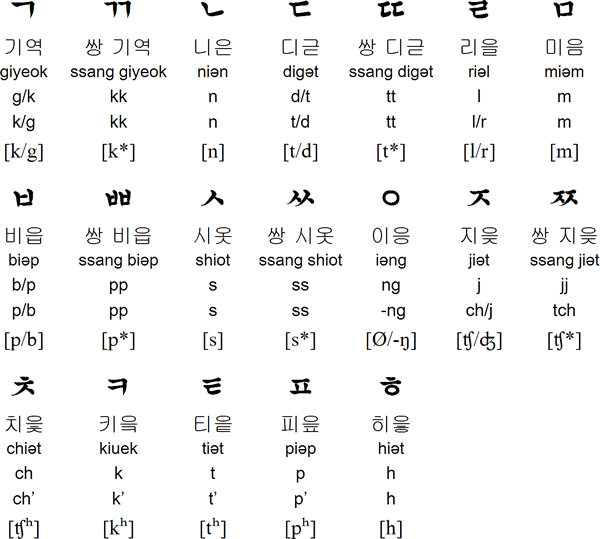South Korea Travel Fact Sheet
Contents
Basic Info
Country Name
Republic of Korea
What the People are Called
South Korean, Korean
Ethnic Groups
South Korea is a relatively homogeneous society with absolute majority of the population of Korean ethnicity. However, with its emergence as an economic powerhouse, opportunities for foreign immigrants increased and in 2007 the number of foreign citizens resident in South Korea passed the million mark for the first time in history. 440,000 of them came from China, with more than half of them being ethnic Koreans of Chinese citizenship. The next largest group was from the United States with 117,000 residents or 12%, excluding the American troops stationed in the country. Vietnam, Philippines, Thailand and other countries followed.
Chinese immigration to Korea has had a long history, with an estimated 120,000 ethnic Chinese residents in South Korea around 1970. However, due to economic restrictions during Park Jung-hee's presidency, the number fell to around 21,000. In a 10-year period starting in the late 1990s, the number of Chinese in Korea recovered and far surpassed its previous figure. Estimates vary, with some counting more than 1,000,000 Chinese citizens living in South Korea as permanent residents or illegal immigrants, including Joseonjok (조선족/朝鮮族, ethnic Koreans with Chinese citizenship) and Han Chinese. There is a large Chinese community in Seoul's southwestern area (Daerim/Namguro) and a smaller but established community in Seongnam. This community, known as Hwagyo (화교, 華僑) by the Koreans.
There are migrant workers from Southeast Asia and increasingly from Central Asia (notably Uzbekistan, many of them ethnic Koreans from there, and Mongolia), and in the main cities, particularly Seoul, there is a growing number of foreigners related to business and education. The number of marriages between Koreans and foreigners has risen steadily in the past few years. In 2005, 14% of all marriages in South Korea were marriages to foreigners (about 26,000 marriages); most were Korean men marrying other Asians, with Joseonjok brides being the most popular and common. Korean men in age brackets up to their 40s outnumber slightly younger Korean women by usually about 10-15%, both due to a high sex ratio and the drop in the birth rate since the 1960s, leading to a demand for foreign wives. Many Korean agencies encourage 'international' marriages to ethnic Koreans living in China, Han Chinese, Vietnamese, Filipino, and Thai women, adding a new degree of complexity to the issue of ethnicity. However that percentage has fallen steadily since 2005, with "international marriages" making up 10% of marriages in South Korea. These marriages are often short-term as the divorce rate has skyrocketed between Koreans and Southeast Asian women, and divorces between such pairings now make up more than 40% of South Korea's total divorce rate.
The number of expatriate English teachers hailing from English-speaking nations has increased from less than 1,000 in 1988 to over 20,000 since 2002.
There are also some 30,000+ United States military personnel and civilian employees throughout the country, an increasing number of whom (as of 2010) are also accompanied by family members.
U.S. Embassy
U.S. Embassy in South Korea 32 Sejongno, Jongno-gu Seoul, Korea Tel: 011-82-2-397-4114 Fax: 011-82-2-738-8845 Email: U.S. Embassy South Korea
Canadian Embassy
21, Jeongdong-gil (Jeong-dong), Jung-gu Seoul, 100 - 120 South Korea
Currency
South Korean won (₩) (KRW)
Time Zone
Korea Standard Time (UTC+9) - Summer (DST) not observed (UTC+9)
Phone/Internet Information
Calling code +82 ISO 3166 code KR Internet TLD .kr .한국
Major Languages Spoken
The Korean language is spoken by the vast majority of the population. English is widely taught in primary school, middle school and high school, and continues to be taught in higher education. The Japanese language, a legacy of the Japanese colonial rule of Korea and an official language until 1945, is not used but has given some loan words to the Korean language, especially for the older generation.
Alphabet

The Korean alphabet, also known as Hangul, or Chosongul (officially transcribed Han-geul in South Korea and Chosŏn'gŭl in North Korea), is the native alphabet of the Korean language. It was created during the Joseon Dynasty in 1443, and is now the official script of both South Korea and North Korea, and co-official in the Yanbian Korean Autonomous Prefecture of China's Jilin Province. In South Korea, Hangul is sometimes augmented by Chinese characters, called hanja, whereas in North Korea, hanja are virtually nonexistent.
Hangul is a featural alphabet of 24 consonant and vowel letters. However, instead of being written sequentially like the letters of the Latin alphabet, Hangul letters are grouped into blocks, such as 한 han, each of which transcribes a syllable. That is, although the syllable 한 han may look like a single character, it is actually composed of three letters: ㅎ h, ㅏ a, and ㄴ n. Each syllabic block consists of two to five letters, including at least one consonant and one vowel. These blocks are then arranged horizontally from left to right or vertically from top to bottom. The number of mathematically possible blocks is 11,172 (see "South Korean order" below), though there are far fewer possible syllables allowed by Korean phonotactics, and not all phonotactically possible syllables occur in actual Korean words. For a phonological description, see Korean phonology.
Major holidays
Jan 1 New Year's Day Jan 30 Seollal Holiday Day 1 Jan 31 Seollal Holiday Day 2 Feb 1 Seollal Holiday Day 3 Mar 1 Independence Movement Day Apr 5 Arbor Day May 1 Labor Day May 5 Children's Day May 6 Buddha's Birthday May 8 Parents' Day Jun 6 Memorial Day Jul 17 Constitution Day Aug 15 Liberation Day Sep 7 Mid-Autumn Festival Day 1 Sep 8 Mid-Autumn Festival Day 2 Sep 9 Mid-Autumn Festival Day 3 Oct 1 Armed Forces Day Oct 3 National Foundation Day Oct 9 Hangeul Proclamation Day Dec 24 Christmas Eve Dec 25 Christmas Day Dec 31 New Year's Eve
Source: Wikipedia South Korean Demographics
Source: Wikipedia South Korea
Source: South Korean Alphabet
Source: Public Holidays South Korea
Back to Adopting from South Korea
